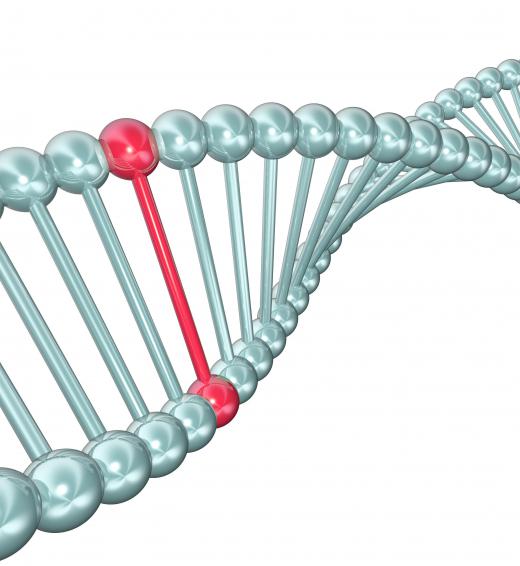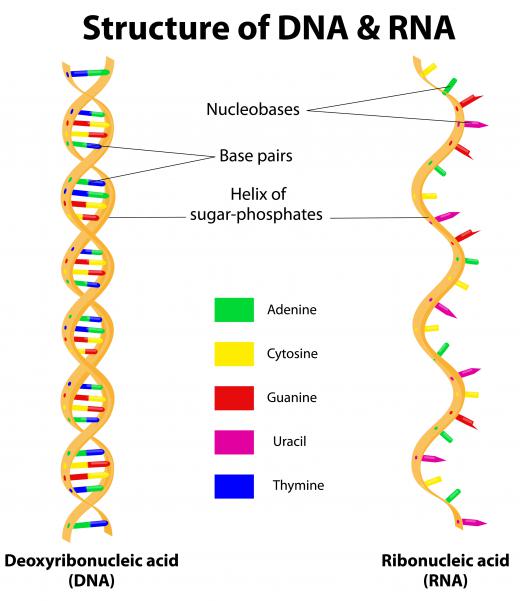In Biology, What Is Transversion?
Transversion is a term used in genetics that indicates a particular type of mutation. Genetic material uses sequences of single molecules, called bases, to code for particular proteins. A mutation occurs when the sequence changes. Transversions are one type of mutation that changes one base in the sequence to another base. A defining feature of transversions is that the original base is a member of one of the two groups of bases, called purines and pyrimidines, and the new base is a member of the other group.
Genetic material can be either deoxyribonucleic acid (DNA) or ribonucleic acid (RNA). Some viruses use RNA, but most other life-forms use DNA. The genetic material of an organism is arranged in sequences that contain the blueprint for proteins, which are necessary for life. The four bases of DNA are adenine (A), thymine (T), guanine (G), and cytosine (C).

These sequences, in discrete sections known as genes, make sense for the body. The body translates each sequence into a particular protein. It does this by reading blocks of three bases, called codons, as one amino acid. Each gene contains lots of sections of three bases, which read for a row of amino acids. These amino acids together make up a protein.
The DNA bases of A, T, G, and C are divided into two groups. Purines are A and G. Pyrimidines are C and T. The A base only binds to T, and the G base only binds with C.
The double-stranded nature of DNA, this binding specificity, is important. Where an A exists on one strand, it binds to a T on the other strand. Each strand is complementary to each other, and a simple double helix results.

Various types of mutations exist, but one type is a simple base substitution, also known as a point mutation. A point mutation is a situation where only one base in the sequence is changed. So, for any amino acid, only one of the three bases coding for it is altered. For example, an AAA codon changes into TAA.
The effect of a point mutation depends on what the new codon codes for. This could be the same amino acid, in which case the protein product is unaffected. This is called silent mutation.
If a new codon could code for a different amino acid, then the protein product is different. This case is a missense mutation. Alternatively, the new codon could make no sense, and the organism can make no protein at all. This is a nonsense mutation.
A transversion is a particular type of point mutation. The term refers to a swap of a purine for a pyrimidine in the sequence or vice versa. This can result in a nonsense mutation, a silent mutation, or a missense mutation.
As an example, the body usually reads an AAA codon as instructions for a lysine amino acid. If a transversion occurs and the AAA turns into a TAA, then the body does not recognize TAA as any amino acid. So, it cannot make the right protein, and the transversion is a nonsense mutation.
Another form of point mutation is transition, which replaces a purine with a purine or a pyrimidine with a pyrimidine. Pyrimidines, as a group, are more similar to each other than they are to purines. The dissimilarity between the two groups means that transversions cause more disruption to amino acid sequences than transitions.
AS FEATURED ON:
AS FEATURED ON:












Discuss this Article
Post your comments